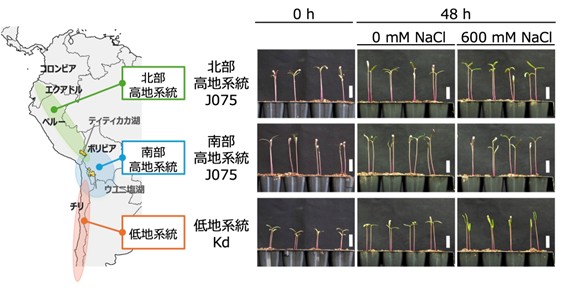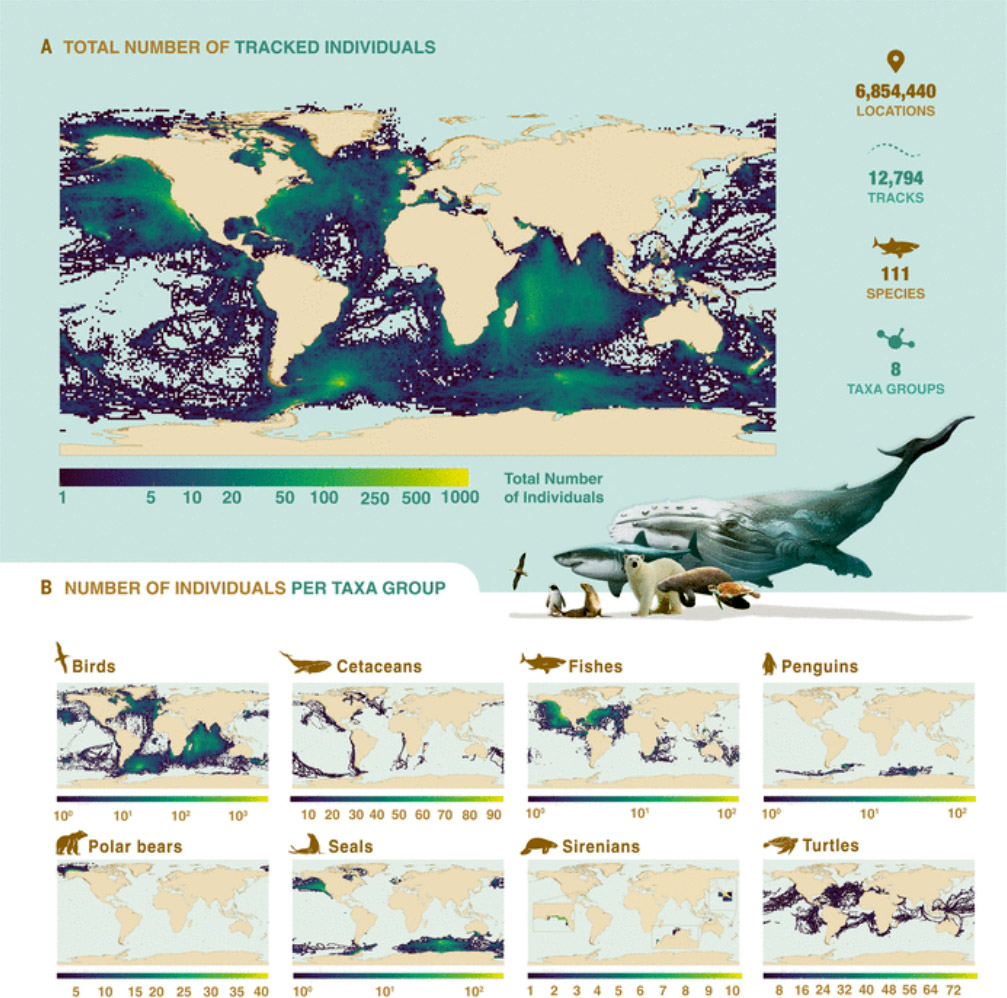2025-06-25 国際農研,名古屋大学,理化学研究所,京都大学,国際協力機構,生研支援センター

図1 海水レベルの塩濃度条件においてもキヌアの幼植物は生育できる
地図では、遺伝子型によって分類される北部高地系統、南部高地系統および低地系統のキヌアが栽培されている地域を示しています。南部高地系統は、主にウユニ塩湖周辺地域で栽培されています。各キヌア系統の幼植物について、処理開始時の0時間目および0mM NaClあるいは海水レベルの塩濃度である600mM NaCl条件で48時間栽培した時の写真を示しています。写真中の白色バーは1cmを表しています。
<関連情報>
- https://www.jircas.go.jp/ja/release/2025/press202506
- https://www.frontiersin.org/journals/plant-science/articles/10.3389/fpls.2025.1597647/full
CqHKT1とCqSOS1はキヌアの高塩濃度条件下で遺伝子型に依存したNa+排除を媒介する
CqHKT1 and CqSOS1 mediate genotype-dependent Na+ exclusion under high salinity conditions in quinoa
Yasufumi Kobayashi,Ryohei Sugita,Miki Fujita,Yasuo Yasui,Yoshinori Murata,Takuya Ogata,Yukari Nagatoshi,Yasunari Fujita
Frontiers in Plant Science Published:18 June 2025
DOI:https://doi.org/10.3389/fpls.2025.1597647
Salinity threatens crop production worldwide, and salinized areas are steadily increasing. As most crops are sensitive to salt, there is a need to improve the salt tolerance of major crops and promote the cultivation of under-utilized salt-tolerant crops. Quinoa, a pseudocereal and leafy vegetable from the Andean region of South America, is highly salt-tolerant, thrives in marginal environments, and has excellent nutritional properties. Research has often focused on epidermal bladder cells, a feature of quinoa thought to contribute to salt tolerance; however, recent evidence suggests that these cells are not directly involved. The salt tolerance mechanism in quinoa remains unclear. Here, we show genotype-dependent differences in Na+ and K+ accumulation mechanisms using representative 18 lines of three genotypes by focusing on young quinoa seedlings at a stage without epidermal bladder cells. High salinity (600 mM NaCl) did not affect the early growth of all three quinoa genotypes. Under high salinity conditions, lowland quinoa lines tended to accumulate more Na+ in their aerial parts than highland lines did. By contrast, K+ accumulation was slightly reduced in the aerial parts but significantly decreased in the roots of all the genotypes. Resequencing of 18 quinoa lines supports the notion that genotype determines aboveground Na+ uptake and gene expression in response to high salinity. Using virus-induced gene silencing, we further demonstrated that CqHKT1 and CqSOS1 mediate Na+ exclusion in quinoa. These findings provide insight into salt tolerance mechanisms, serving as a basis for improving crop production under high salinity conditions.



